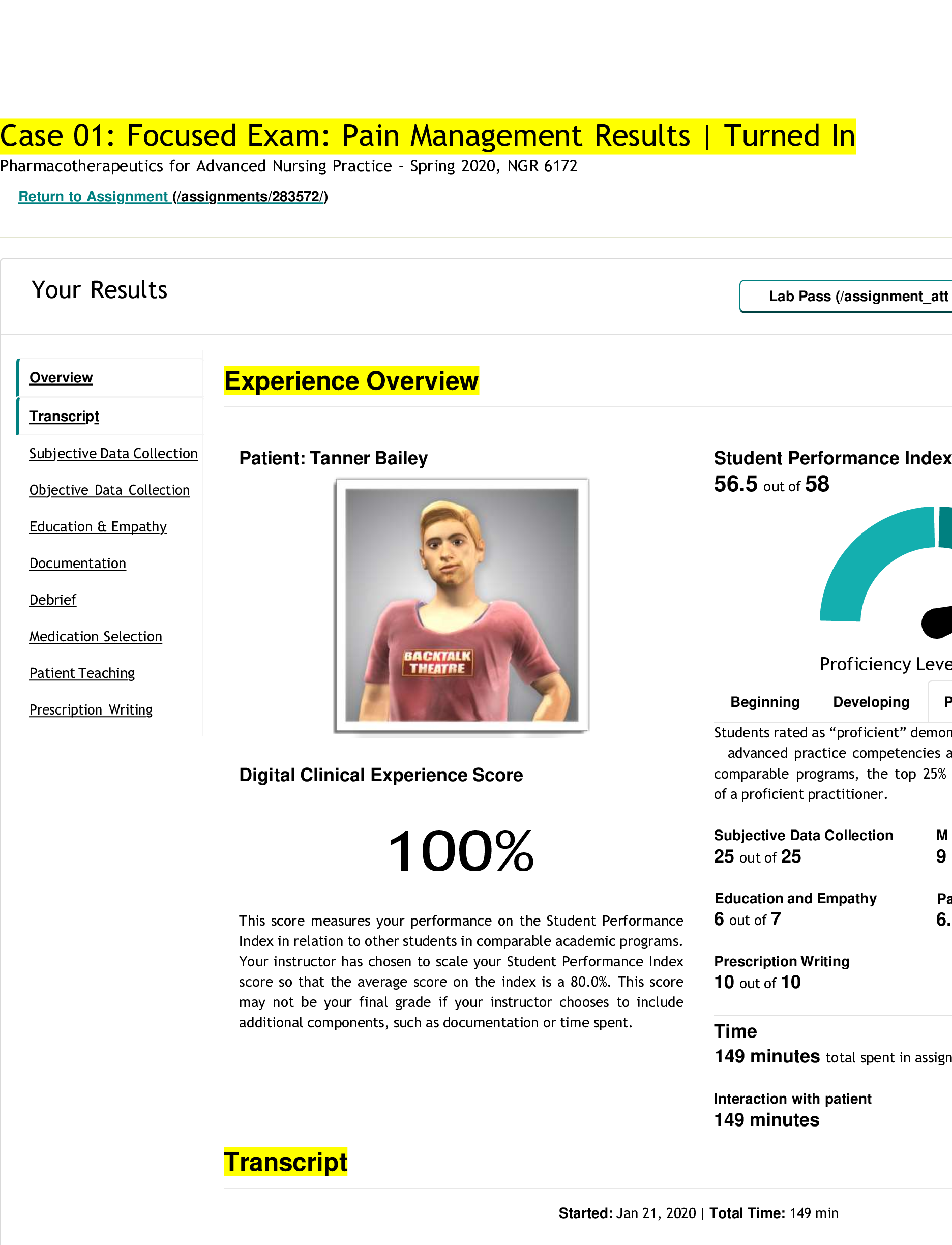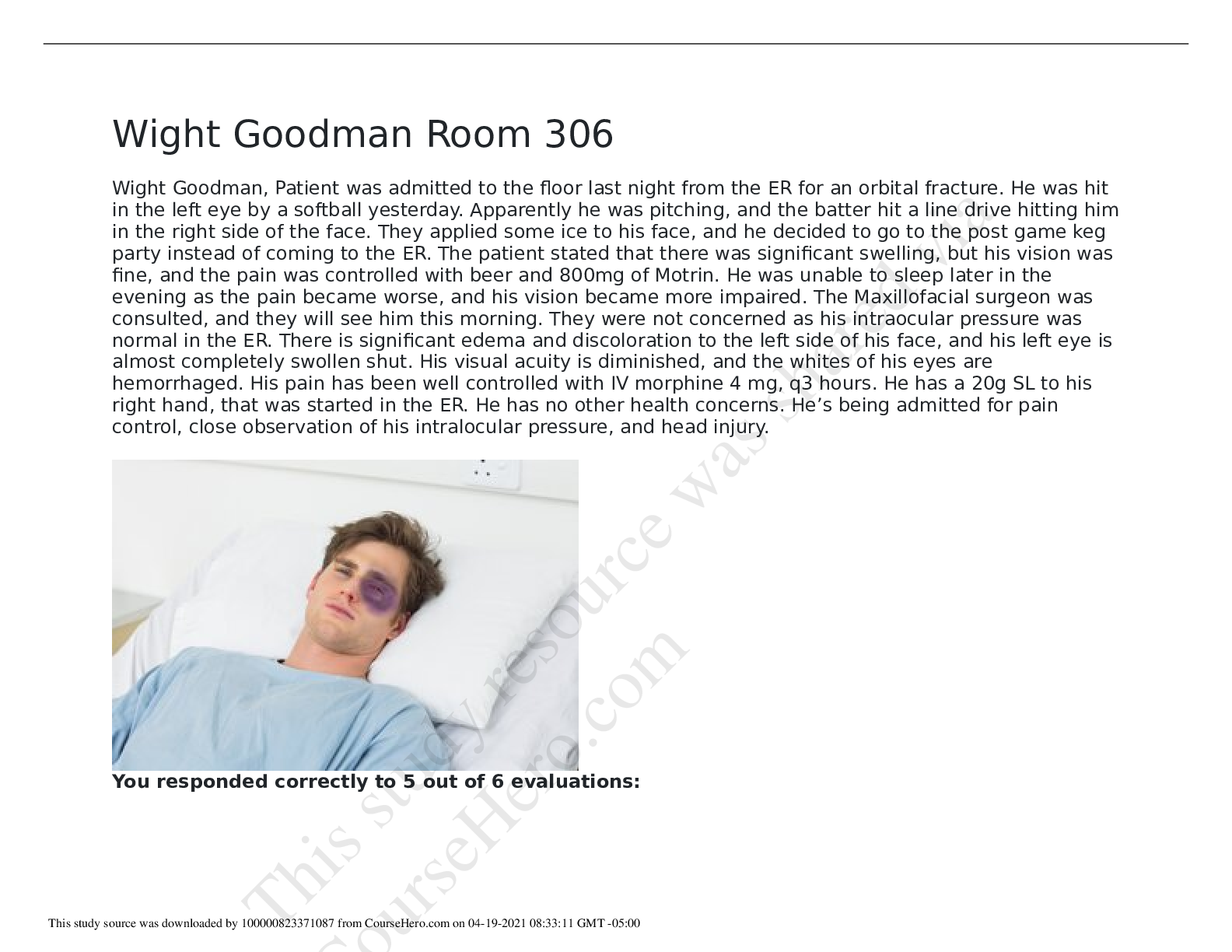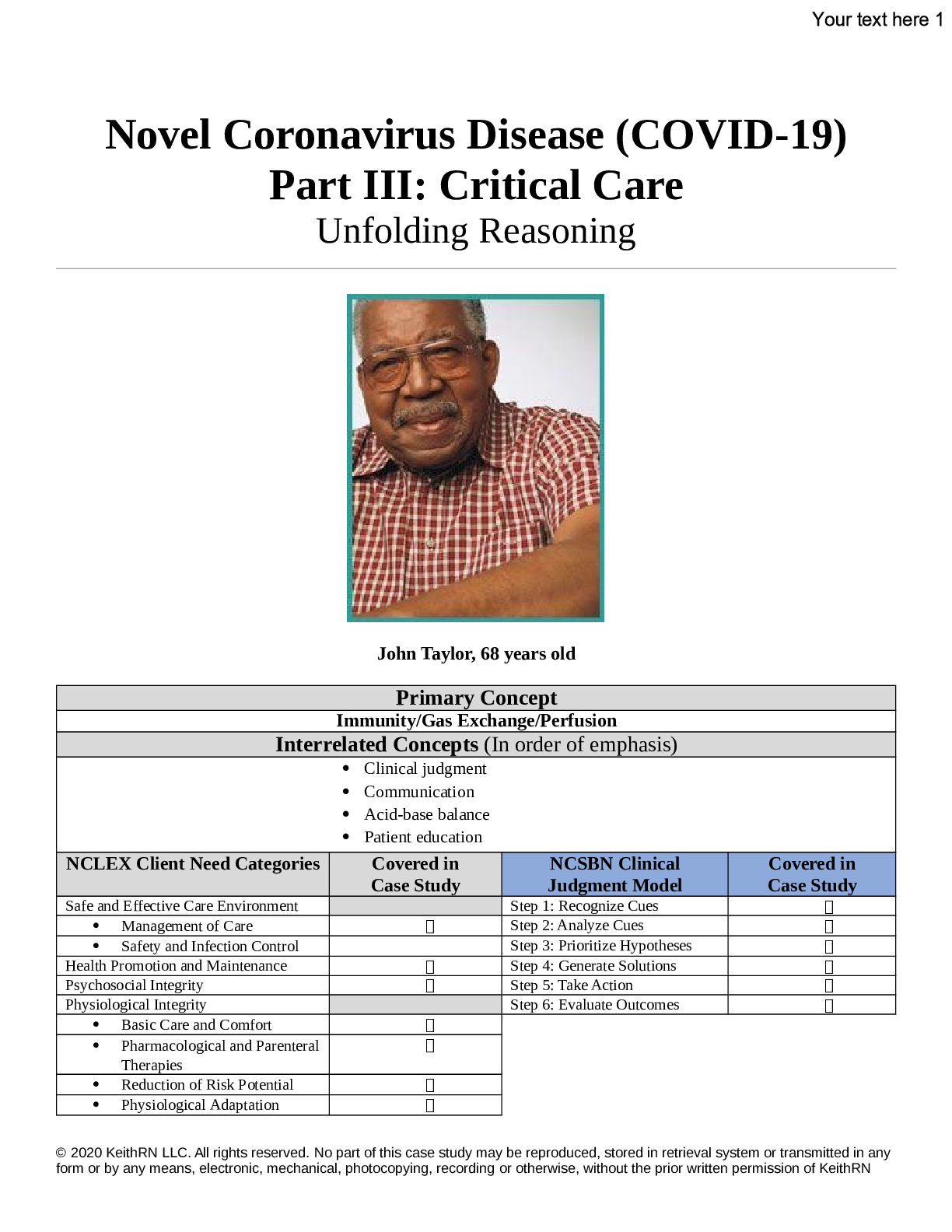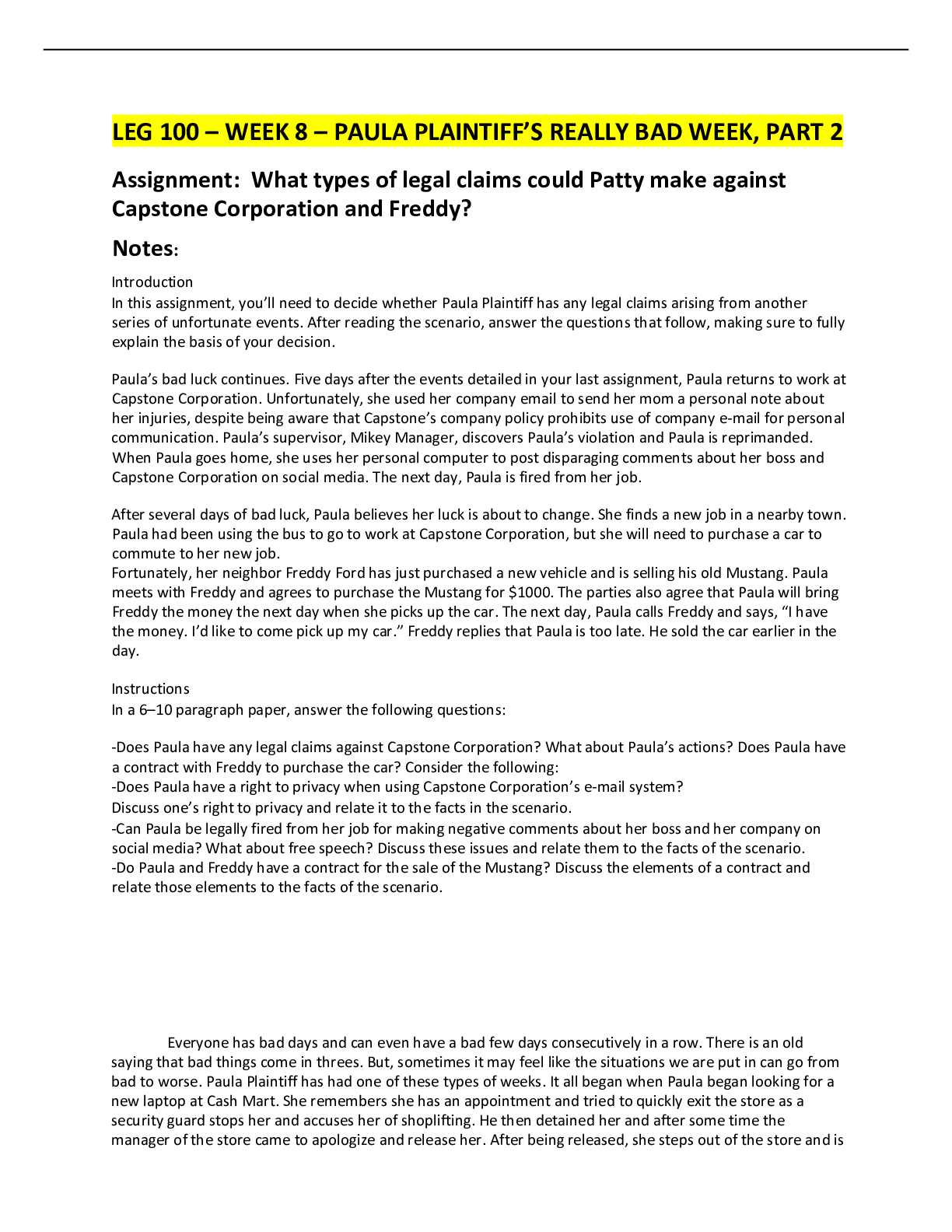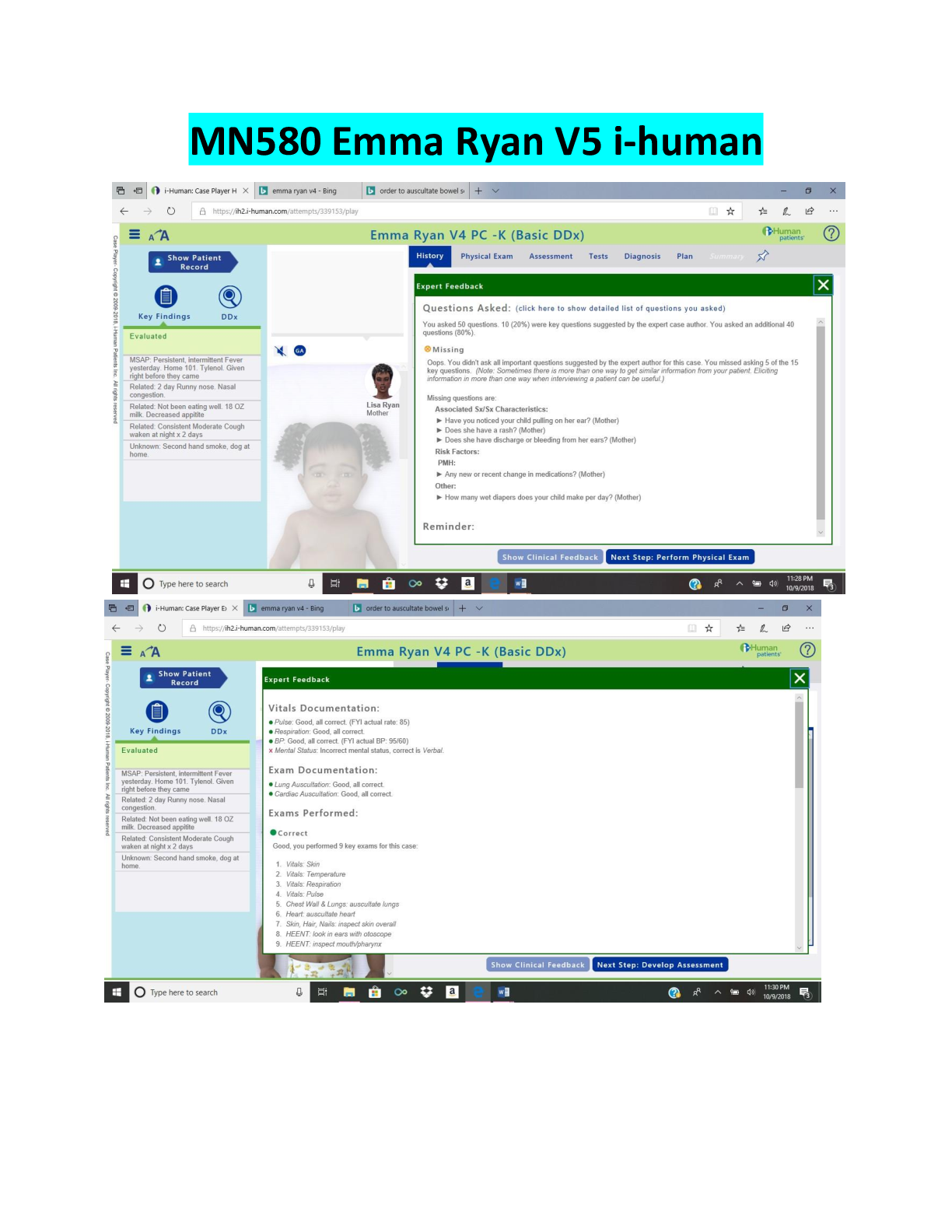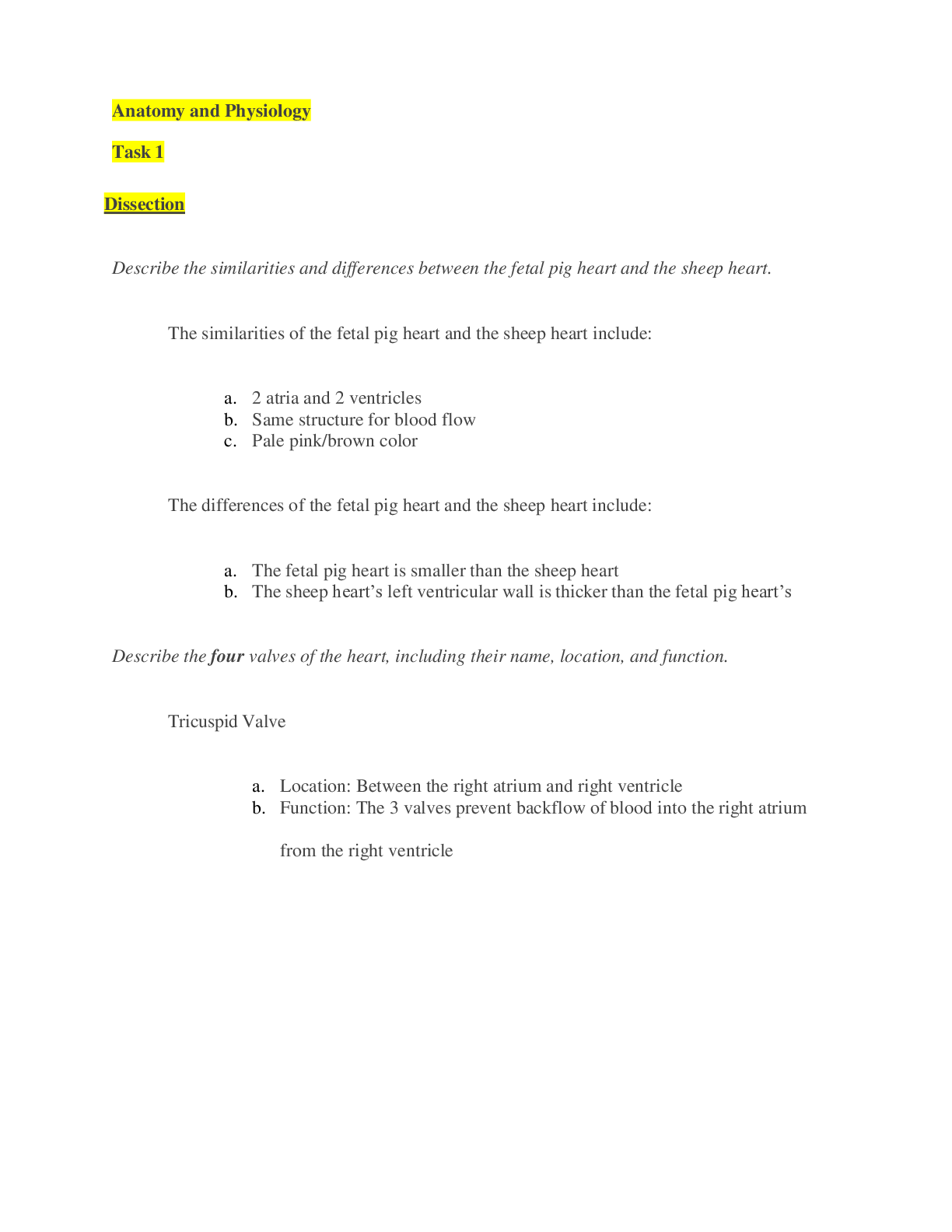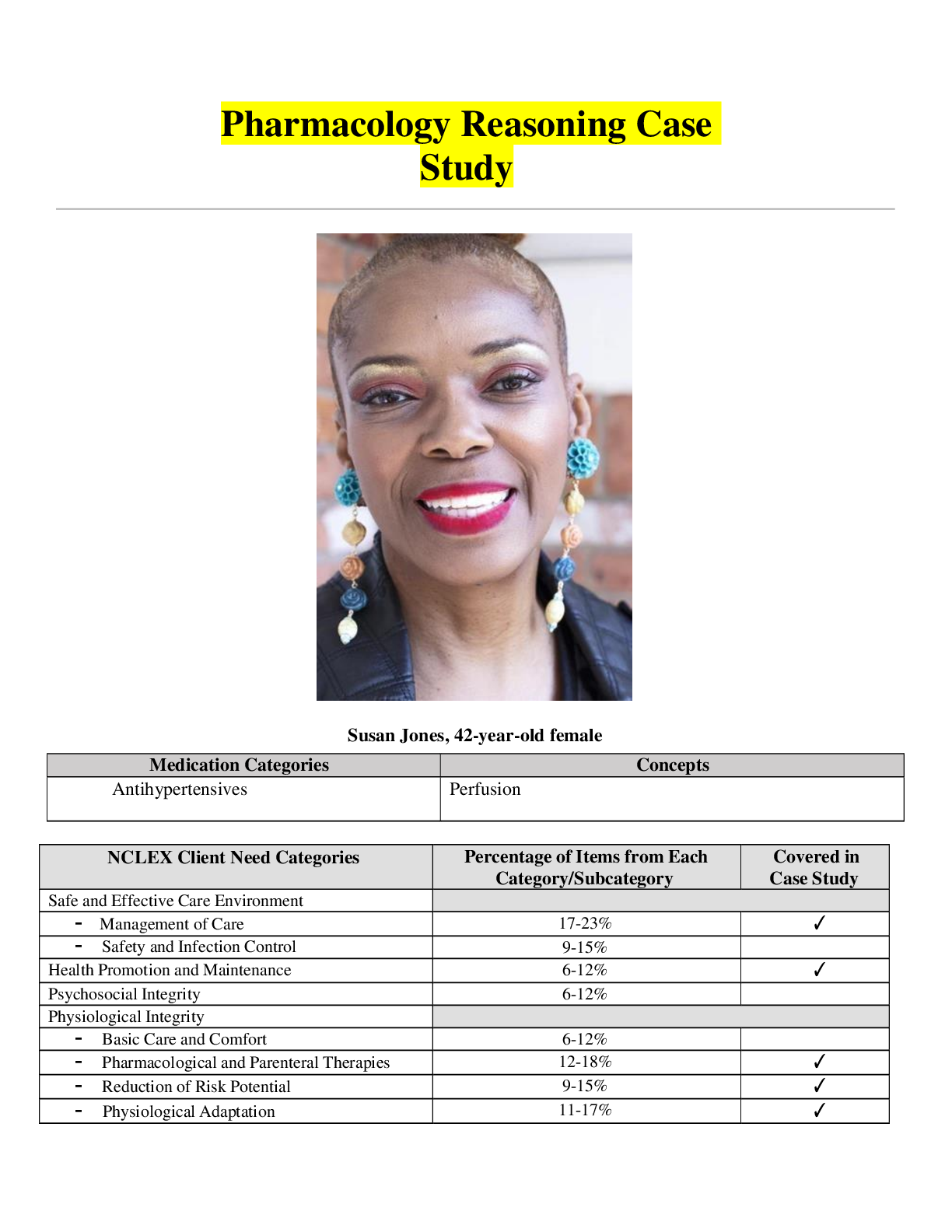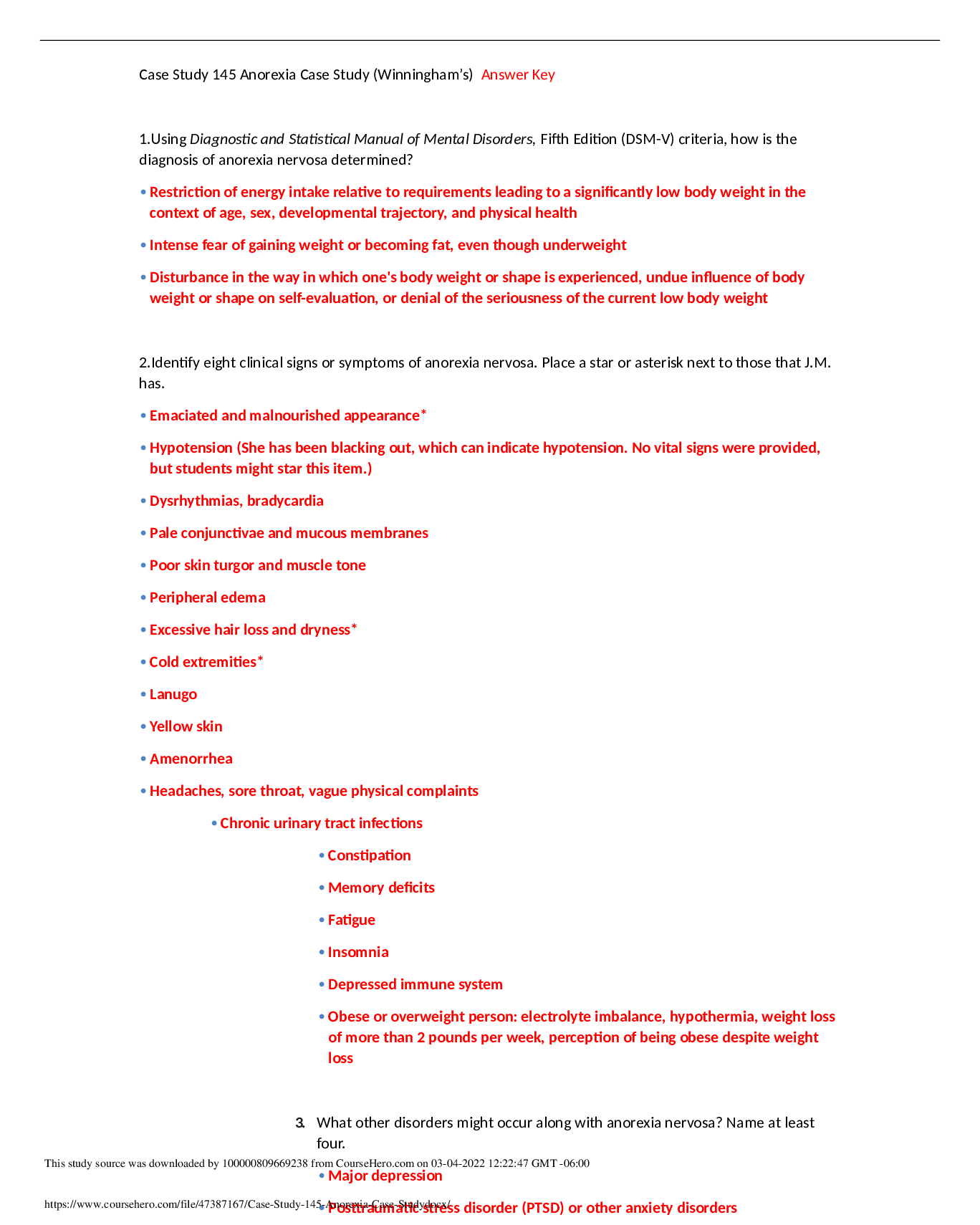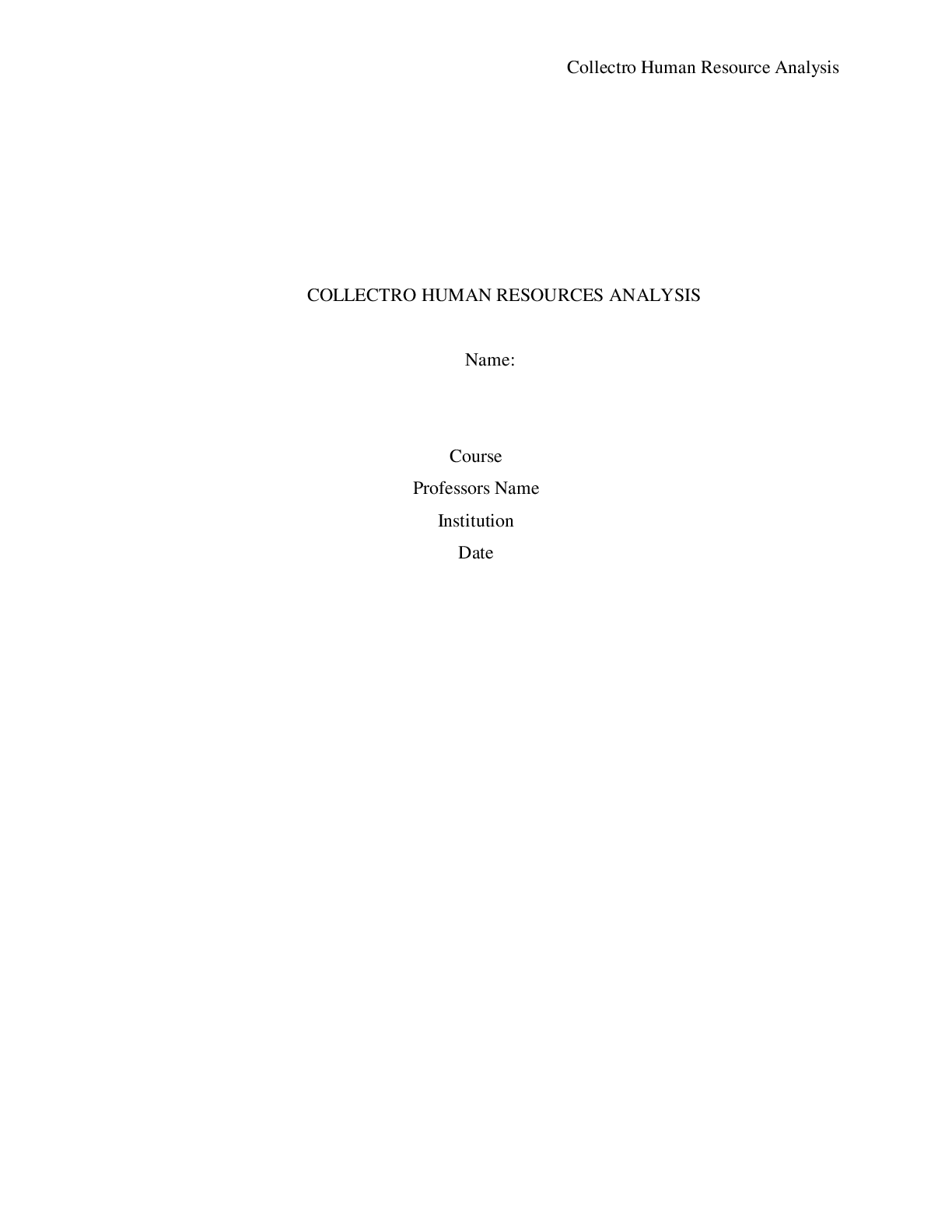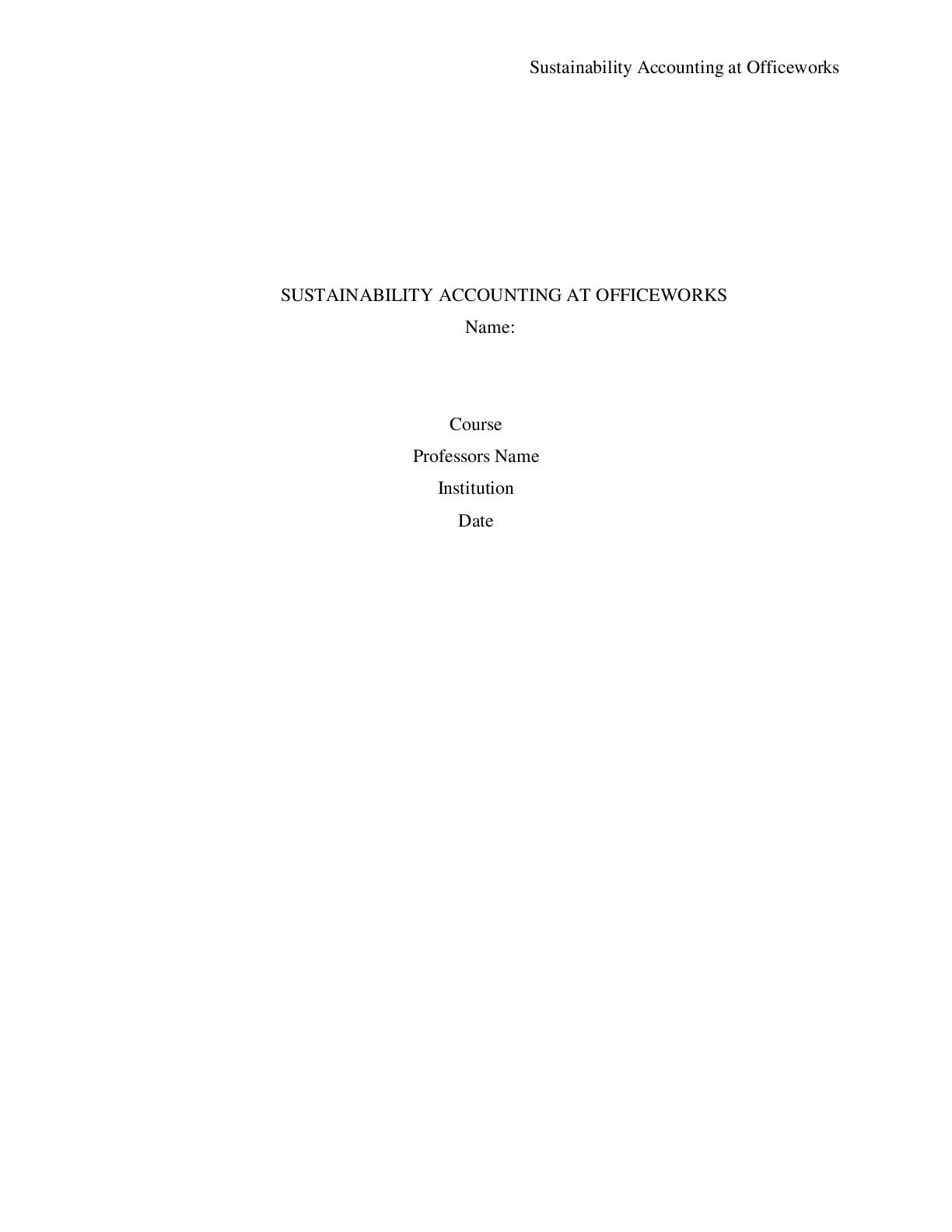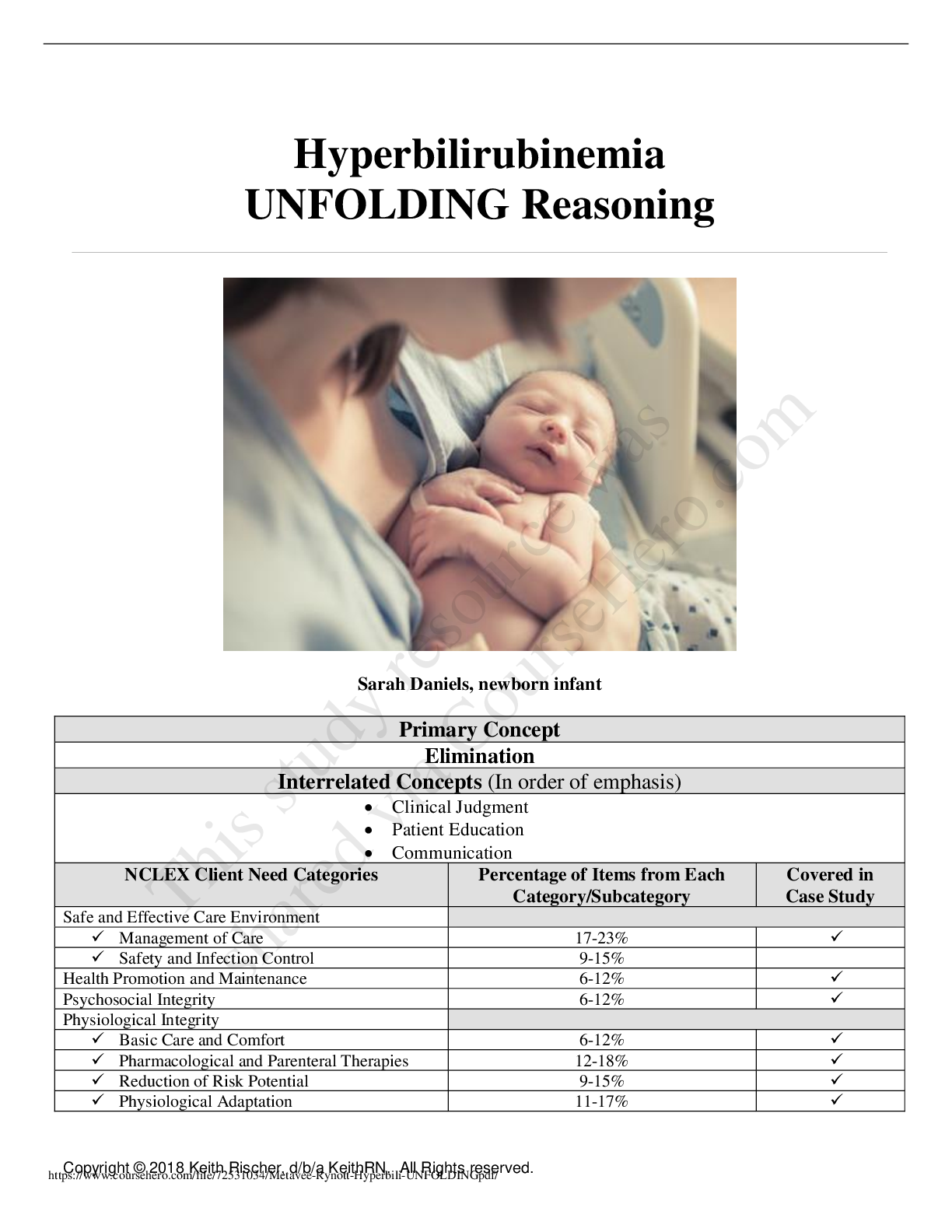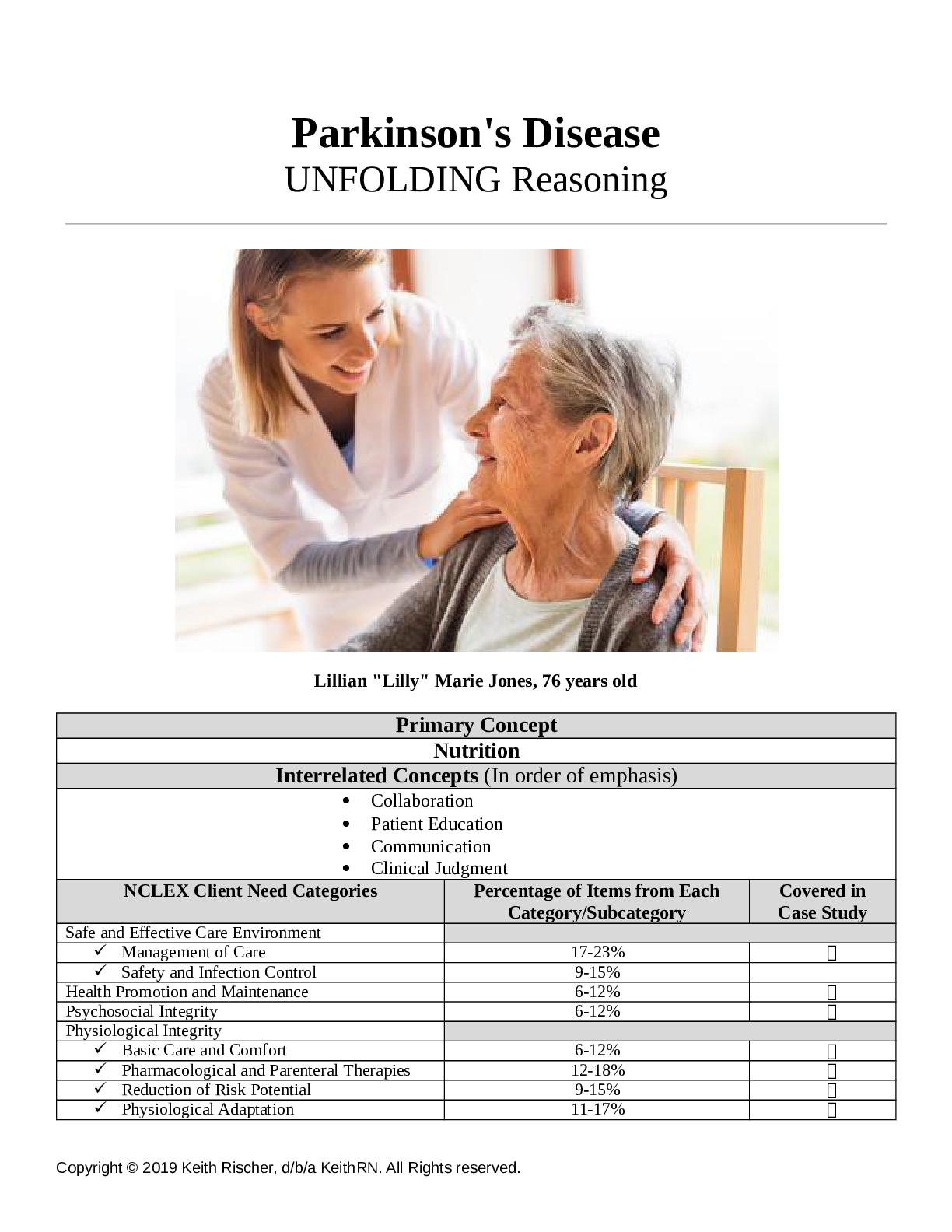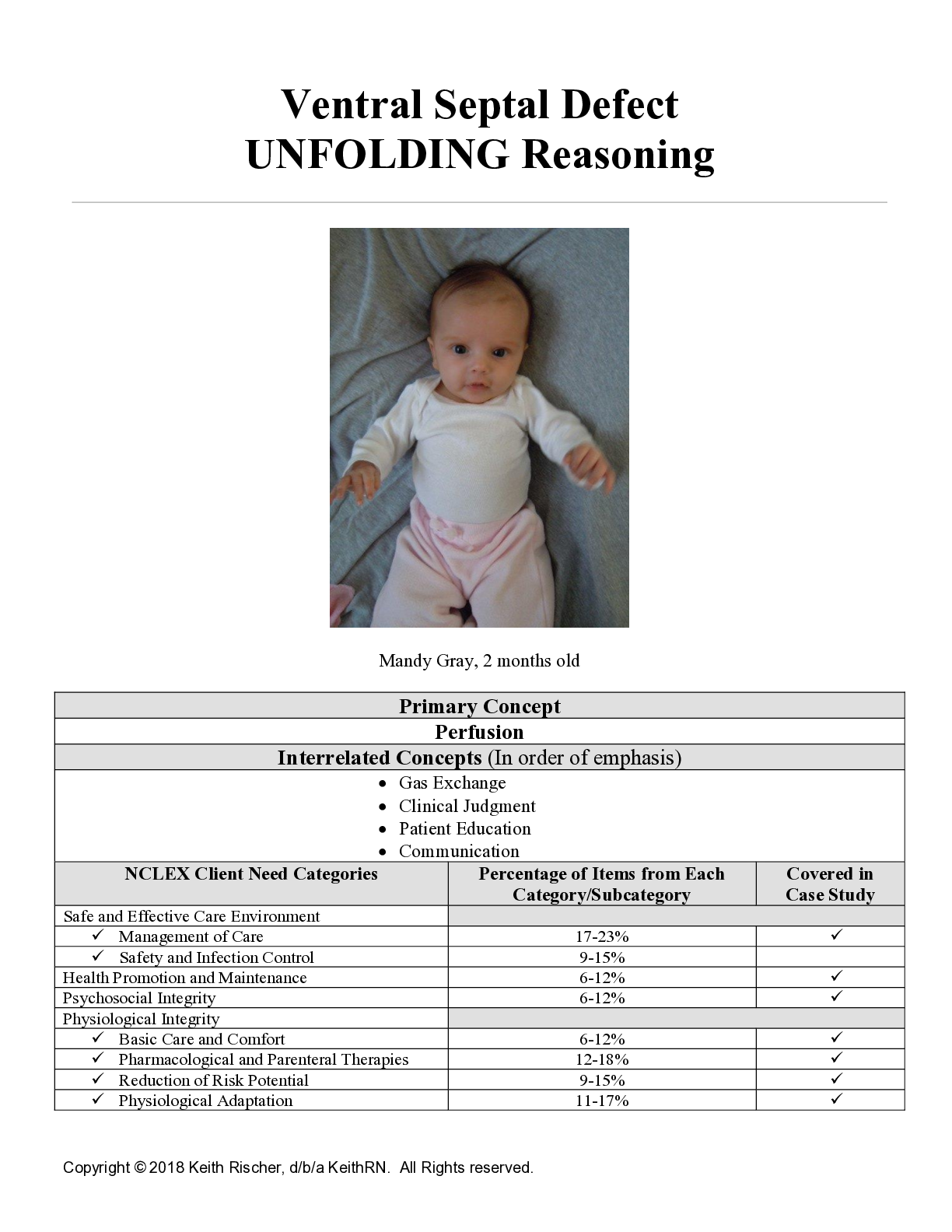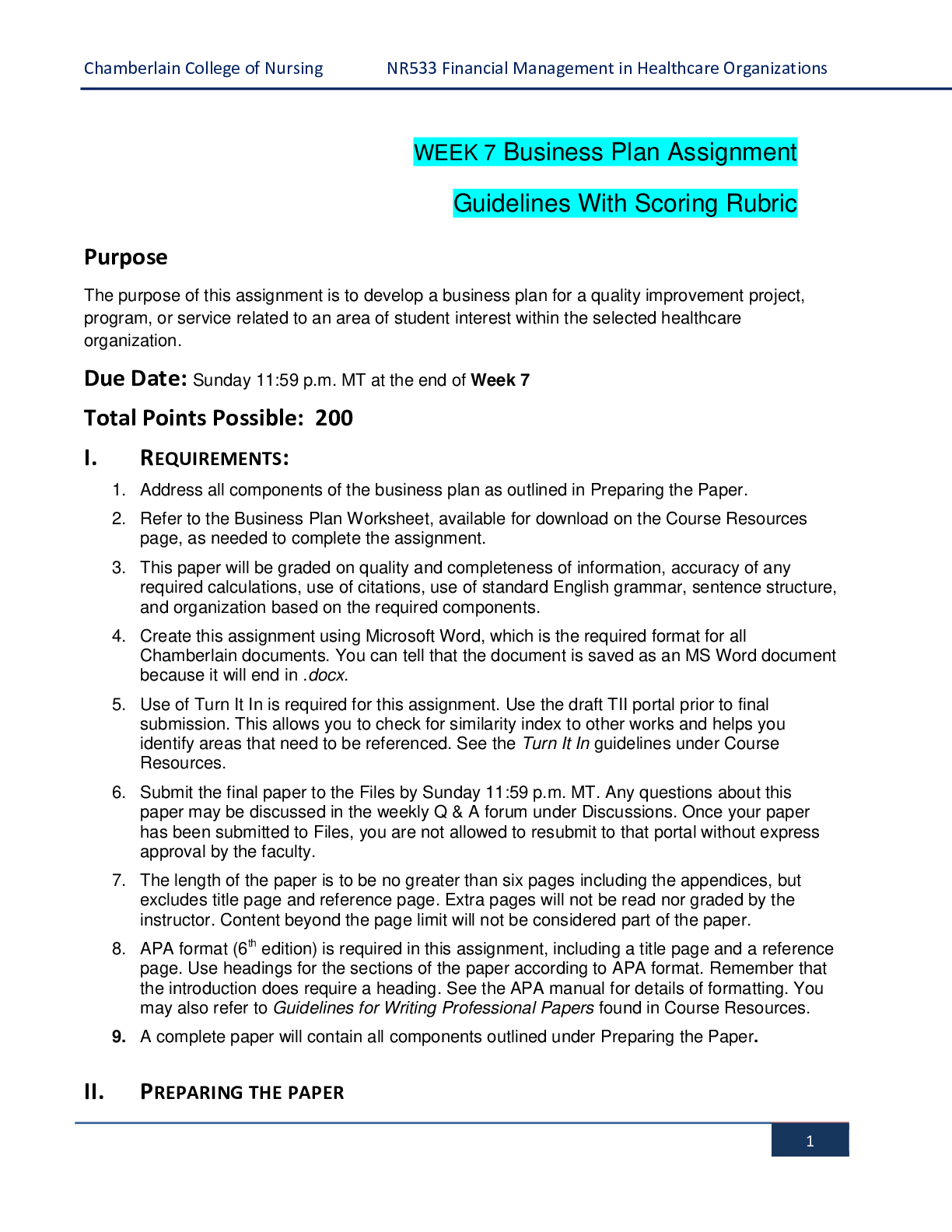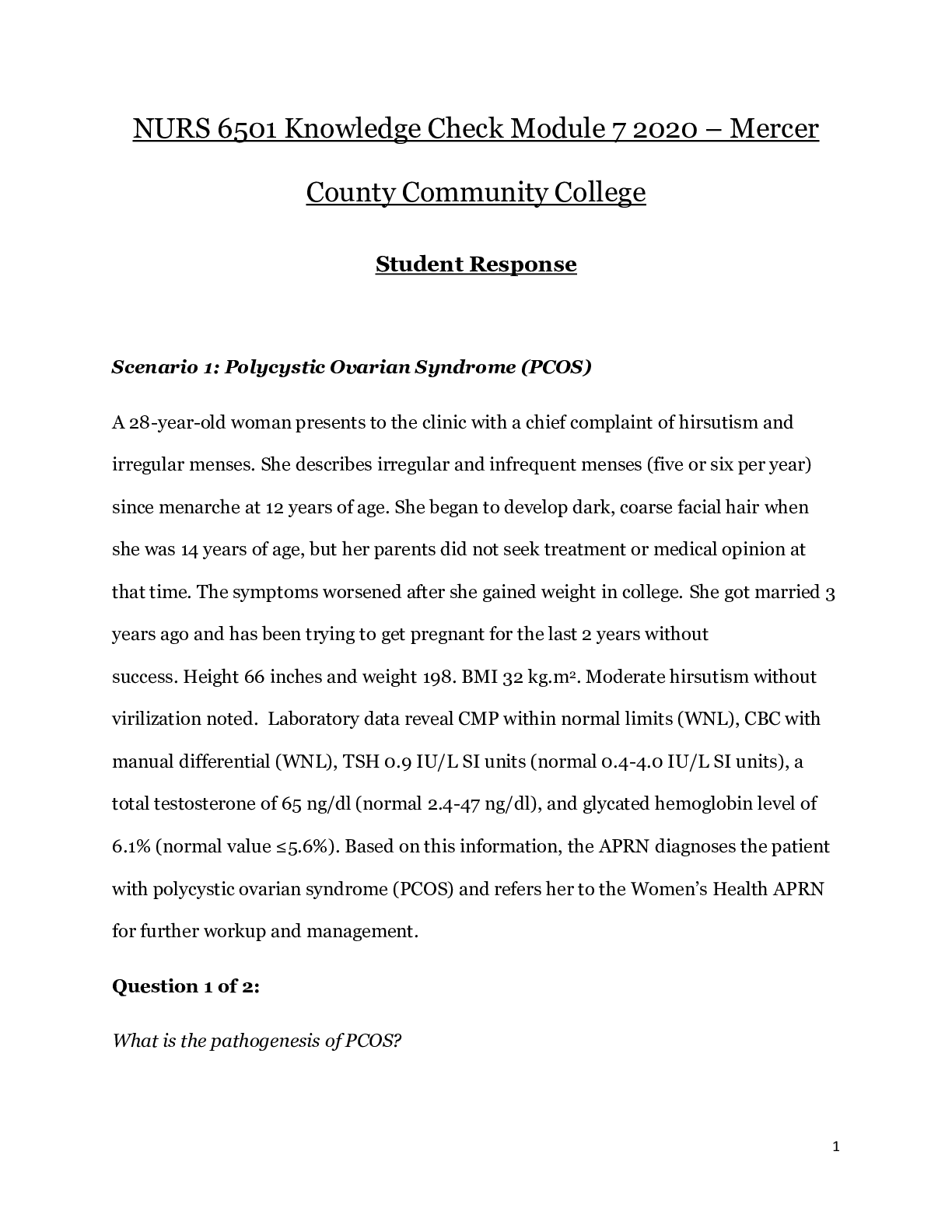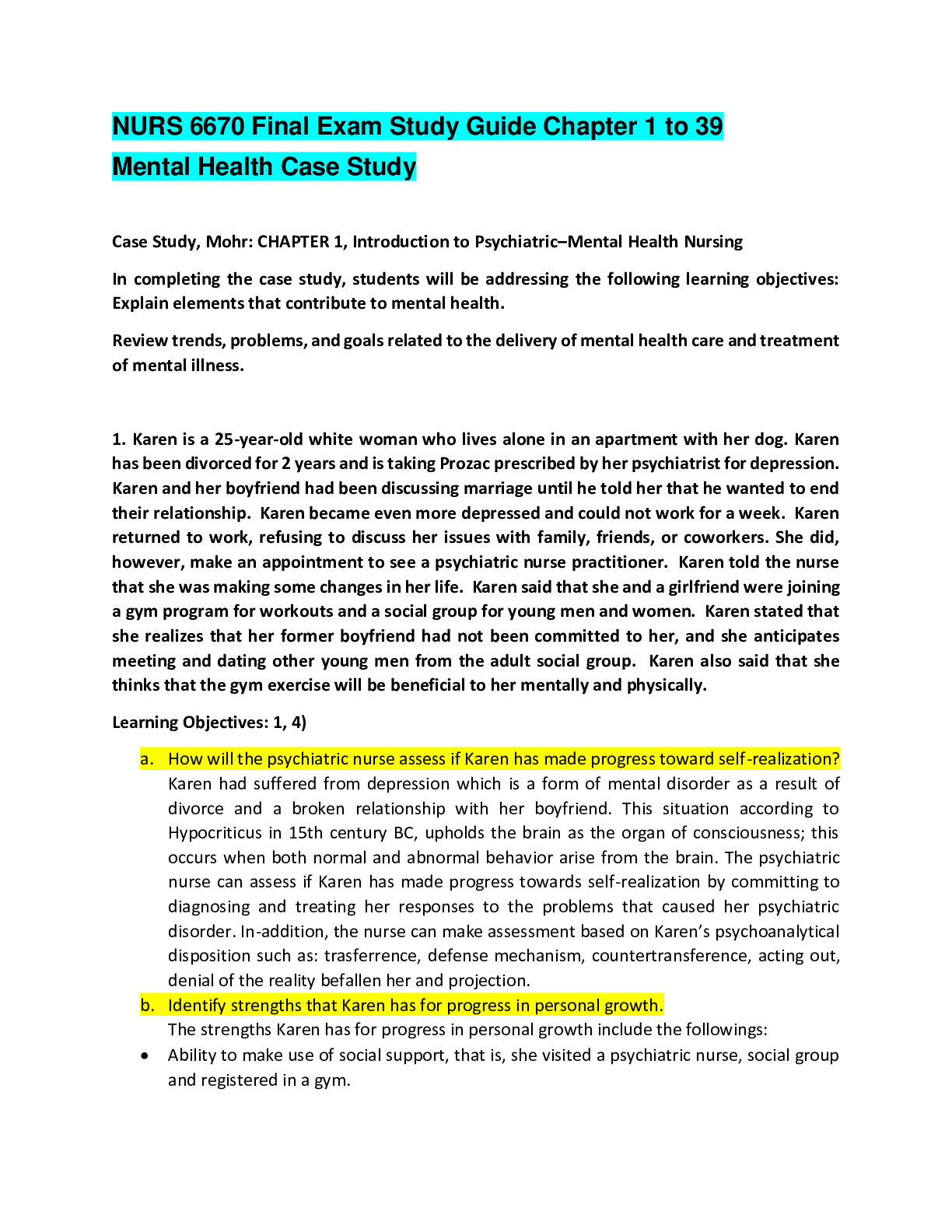*NURSING > CASE STUDY > Case Study 145 Anorexia Case Study (answers) 100% all correct latest Spring 2021/2022 (All)
Case Study 145 Anorexia Case Study (answers) 100% all correct latest Spring 2021/2022
Document Content and Description Below
Case Study 145 Anorexia Case Study (answers) 100% all correct latest Spring 2021/2022-1. Using Diagnostic and Statistical Manual of Mental Disorders, Fifth Edition (DSM-V) criteria, how is the diagnos... is of anorexia nervosa determined? • Restriction of energy intake relative to requirements leading to a significantly low body weight in the context of age, sex, developmental trajectory, and physical health • Intense fear of gaining weight or becoming fat, even though underweight • Disturbance in the way in which one's body weight or shape is experienced, undue influence of body weight or shape on self-evaluation, or denial of the seriousness of the current low body weight 2. Identify eight clinical signs or symptoms of anorexia nervosa. Place a star or asterisk next to those that J.M. has. • Emaciated and malnourished appearance* • Hypotension (She has been blacking out, which can indicate hypotension. No vital signs were provided, but students might star this item.) • Dysrhythmias, bradycardia • Pale conjunctivae and mucous membranes • Poor skin turgor and muscle tone • Peripheral edema • Excessive hair loss and dryness* • Cold extremities* • Lanugo • Yellow skin • Amenorrhea • Headaches, sore throat, vague physical complaints • Chronic urinary tract infections • Constipation • Memory deficits • Fatigue • Insomnia • Depressed immune system • Obese or overweight person: electrolyte imbalance, hypothermia, weight loss of more than 2 pounds per week, perception of being obese despite weight loss 3. What other disorders might occur along with anorexia nervosa? Name at least four. • Major depression 5•-APnoosrettxiraa-Cuamse-aStitucdysdtorcex/ss disorder (PTSD) or other anxiety disorders • Bulimia nervosa • Obsessive-compulsive disorder (OCD) • Eating disorders not otherwise specified • Binge-eating disorder • Cardiac dysrhythmias 4. How does bulimia nervosa differ from anorexia nervosa? • Anorexia nervosa is refusal to maintain body weight at a minimum level for age and height or failure to gain weight during a period of growth, resulting in body weight less than 85% of what is expected. The person has an intense fear of gaining weight or becoming fat, even though the person is underweight. The person may have a persistent inability to recognize the seriousness of the very low body weight and extreme weight loss. Some types of anorexia nervosa involve periods of binging and purging behaviors. • Bulimia is characterized by recurrent periods of binge eating and recurrent, inappropriate behaviors to prevent weight gain (such as self-induced vomiting; use of laxatives, enemas, and diuretics to lose weight; fasting; or excessive exercise). This cycle occurs, on average, at least once a week for 3 months. 5. Name five behaviors that J.M. or any other patient with anorexia may engage in other than self-starvation. • Excessive daily exercise • Binging and purging [Show More]
Last updated: 1 year ago
Preview 1 out of 6 pages
Reviews( 0 )
Document information
Connected school, study & course
About the document
Uploaded On
Mar 06, 2022
Number of pages
6
Written in
Additional information
This document has been written for:
Uploaded
Mar 06, 2022
Downloads
0
Views
91

